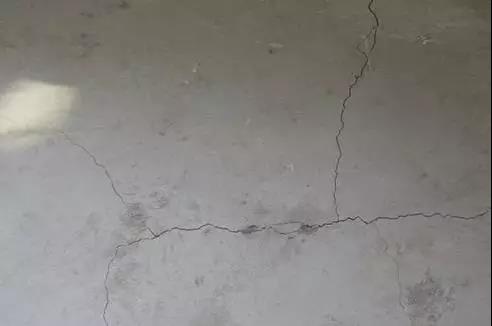Knowledge about cement-based self-leveling mortar Part 2
In the new construction, reconstruction and maintenance projects, a large amount of cement mortar floor is required, which greatly increases the amount of plastering in the ground works. After several years of field work, it was found that the floor plastering of office buildings, residential buildings and other projects all have varying degrees of sanding, hollowing, cracks and even surface peeling, which have become a common quality problem of cement mortar floors. The reasons for the common quality problems and the methods for making cement mortar floors are described below:
1. Analysis of the causes of common quality problems
1.1 Ground empty drum

The surface layer is provided with a combination with the base layer, and there is an empty sound when knocked, and the cause of the empty drum phenomenon is:
(1) The surface of the base layer is not cleaned well, and there are floating ash, serous film or other dirt, so that the top layer cannot be well combined with the base layer.
(2) The surface of the base layer is not wet or insufficiently watered. Due to the inadequate bonding of the cushion layer, there is stagnant water on the surface of the base layer, which increases the lime ratio of the mortar in the stagnant part, so that the surface layer cannot adhere to the base layer.
(3) The ratio of the concrete cushion is not well controlled, there is too much slag, and the flutter is not true , which makes the cushion low in strength, large in shrinkage, and the surface layer falling off.
(4) The dark ground management is not set well , and there is looseness in the plastering process, which affects the combination of the surface layer and the grassroots layer, resulting in a hollow wire tube.
1.2 Ground cracks

The causes of irregular hairline cracks on the ground are as follows:
(1) Why cracks along the length of the floor. Mainly because the construction plate seam cleaning net, concreting false, good curing, the concrete slab is not enough to increase the strength of the construction loads the deformation floor, pouring of concrete between the floor and a gap, crack after plastering.
(2) Cracks along the direction of the floor support. Precast floor generated by the charge deflection, midspan deflection maximum, and the plate upturned, prone to cracks at the tip floor; floor when installing the seat support slurry false or no base slurry, pouring loose joint.
(3) Irregular cracks on the ground surface. Cement has poor stability and insufficient strength; mixed use of different types of cement will cause cracks in the surface layer due to different setting and hardening time and shrinkage; sand grains are too fine, the mud content is too large, the strength of the mixture is low, and it is easy to cause shrinkage cracks ; During operation, the water-cement ratio is too large, the mixing ratio is inaccurate, resulting in mortar segregation and low strength, which weakens the cohesion of the mortar and increases the shrinkage rate; the surface layer is not cured in time or is not cured, resulting in shrinkage cracks; the base layer is not Flattening makes the surface layer uneven or thick, or there is no large gap in the surface. Shrinkage cracks occur on the surface and the structure is deformed. The excessive use of additives and hollow drums can easily cause cracks.
1.3 Sand from the ground
The surface is not smooth, and a layer of cement and sand powder appears on the ground. The reasons are:
(1) The raw materials do not meet the requirements, improper cement labeling and selection, or the use of expired damp cement, which affects the strength and abrasion resistance of the ground; the grain size of the sand is too fine, and the water consumption during mixing is large, and the strength is reduced; Bonding of cement and sand.
(2) The consistency of the mixture is too large, which causes the aggregate to precipitate and dehydrate , which reduces the surface strength and wear resistance.
(3) Improper process arrangement will cause the ground calendering time to be too early or too late, it will also reduce the surface mortar strength and abrasion resistance, too late or unmaintained, too early in the morning, early freezing, etc. will affect the quality of the cement floor In severe cases, sand and peeling occur.
 Chinese
Chinese English
English





